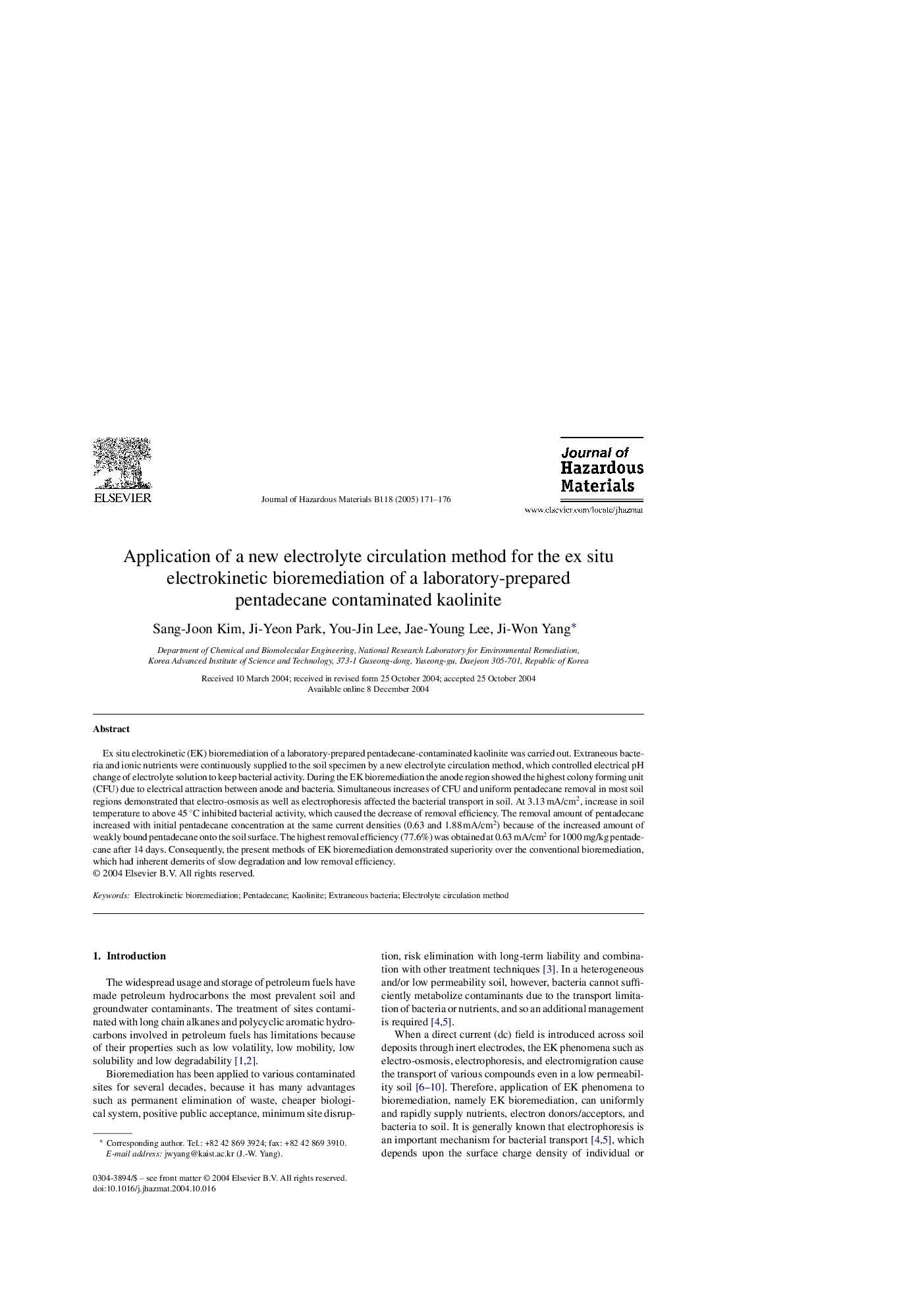| Article ID | Journal | Published Year | Pages | File Type |
|---|---|---|---|---|
| 9674396 | Journal of Hazardous Materials | 2005 | 6 Pages |
Abstract
Ex situ electrokinetic (EK) bioremediation of a laboratory-prepared pentadecane-contaminated kaolinite was carried out. Extraneous bacteria and ionic nutrients were continuously supplied to the soil specimen by a new electrolyte circulation method, which controlled electrical pH change of electrolyte solution to keep bacterial activity. During the EK bioremediation the anode region showed the highest colony forming unit (CFU) due to electrical attraction between anode and bacteria. Simultaneous increases of CFU and uniform pentadecane removal in most soil regions demonstrated that electro-osmosis as well as electrophoresis affected the bacterial transport in soil. At 3.13 mA/cm2, increase in soil temperature to above 45 °C inhibited bacterial activity, which caused the decrease of removal efficiency. The removal amount of pentadecane increased with initial pentadecane concentration at the same current densities (0.63 and 1.88 mA/cm2) because of the increased amount of weakly bound pentadecane onto the soil surface. The highest removal efficiency (77.6%) was obtained at 0.63 mA/cm2 for 1000 mg/kg pentadecane after 14 days. Consequently, the present methods of EK bioremediation demonstrated superiority over the conventional bioremediation, which had inherent demerits of slow degradation and low removal efficiency.
Keywords
Related Topics
Physical Sciences and Engineering
Chemical Engineering
Chemical Health and Safety
Authors
Sang-Joon Kim, Ji-Yeon Park, You-Jin Lee, Jae-Young Lee, Ji-Won Yang,
